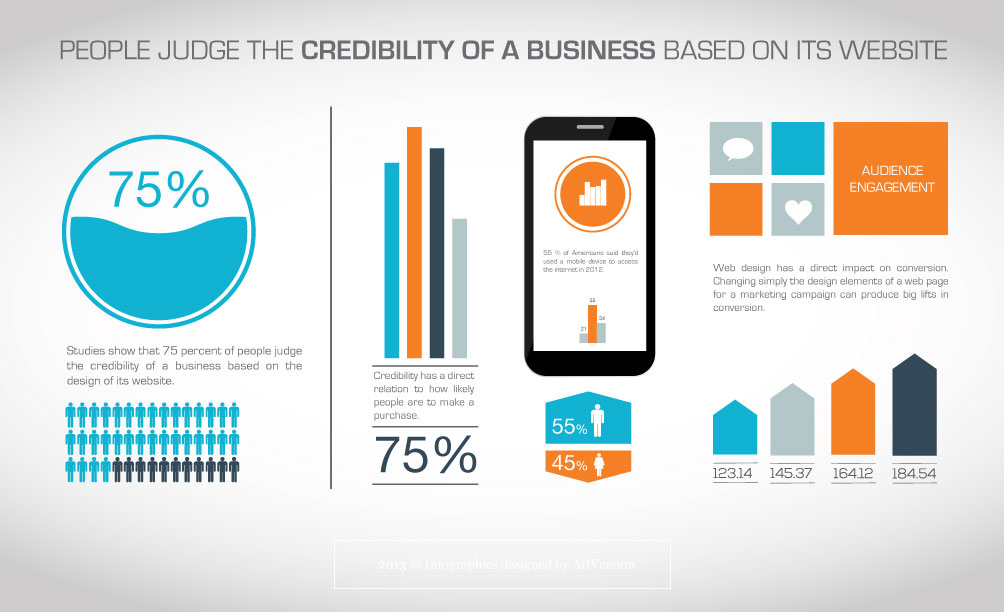Website Design: Enhancing Individual Experience For Better Conversions
Website Design: Enhancing Individual Experience For Better Conversions
Blog Article
Staff Author-Lamont Chang
Have you ever before saw an internet site that took for life to load, had a complicated navigating system, or didn't display appropriately on your smart phone? Opportunities are, you promptly abandoned that website and moved on to one that gave a far better individual experience.
In today's competitive online landscape, it's critical for businesses to prioritize website design that enhances customer experience in order to drive better conversions. In https://examplesofcontentmarketin28405.59bloggers.com/30683005/leading-search-engine-optimization-methods-to-drive-organic-traffic-to-your-internet-site , we will check out the value of responsive layout, the use of intuitive navigation, and the optimization of page load rate to produce a seamless and engaging customer trip.
Remain tuned to uncover how these components can considerably affect your web site's success.
Significance of Responsive Design
Responsive design is vital in today's digital landscape for developing websites that adjust seamlessly to different screen sizes and tools. When your web site is responsive, it immediately readjusts its layout and web content to fit any kind of gadget, whether it's a smart device, tablet computer, or desktop. This is vital since a growing number of individuals are accessing the net via their mobile devices.
If your site isn't responsive, it can lead to a bad user experience. Customers may need to pinch and zoom to read material, switches may be as well little to click on, and images might not be optimized for smaller displays. https://www.business2community.com/search-engine-optimization/3-differences-between-seo-and-sem-in-digital-marketing-02445635 can irritate customers and result in high bounce prices and low conversions.
Using Instinctive Navigation
When creating a receptive internet site, it is necessary to focus on using instinctive navigation for an enhanced individual experience.
User-friendly navigation refers to arranging your website's food selection and navigation elements in a logical and easy to use means. By doing so, you make it much easier for visitors to locate what they're looking for and browse through your website easily.
Intuitive navigating helps reduce confusion and frustration, ultimately causing much better user engagement and enhanced conversions.
To achieve user-friendly navigation, take into consideration making use of clear and descriptive tags for your food selection items, applying a consistent design across all pages, and integrating search functionality for fast accessibility to certain content. In addition, it's critical to prioritize important pages and information, ensuring they're plainly shown and easily obtainable.
Optimizing Web Page Load Speed
To improve user experience, it's vital to enhance the web page load speed of your web site. Slow packing times can frustrate individuals and lead to greater bounce rates.
Luckily, there are several methods you can implement to enhance your web site's tons speed. First of all, consider reducing the dimension of your photos by compressing them without jeopardizing high quality.
Additionally, maximize your code by minimizing unnecessary scripts and CSS data. Another effective method is to leverage internet browser caching, which enables specific aspects of your internet site to be stored in your area, minimizing tons times for returning site visitors.
Furthermore, think about using a material shipment network (CDN) to distribute your internet site's documents across multiple servers, boosting lots rate for users in different geographical locations.
Final thought
In conclusion, by employing receptive layout, instinctive navigation, and maximizing web page lots rate, web designs can dramatically improve individual experience and drive far better conversions.
With an user-friendly user interface, easy navigation, and quick packing times, websites can catch and maintain the focus of users, causing increased involvement and greater conversion prices.
So, do not postpone in applying these website design approaches to ensure a smooth and successful user experience!
